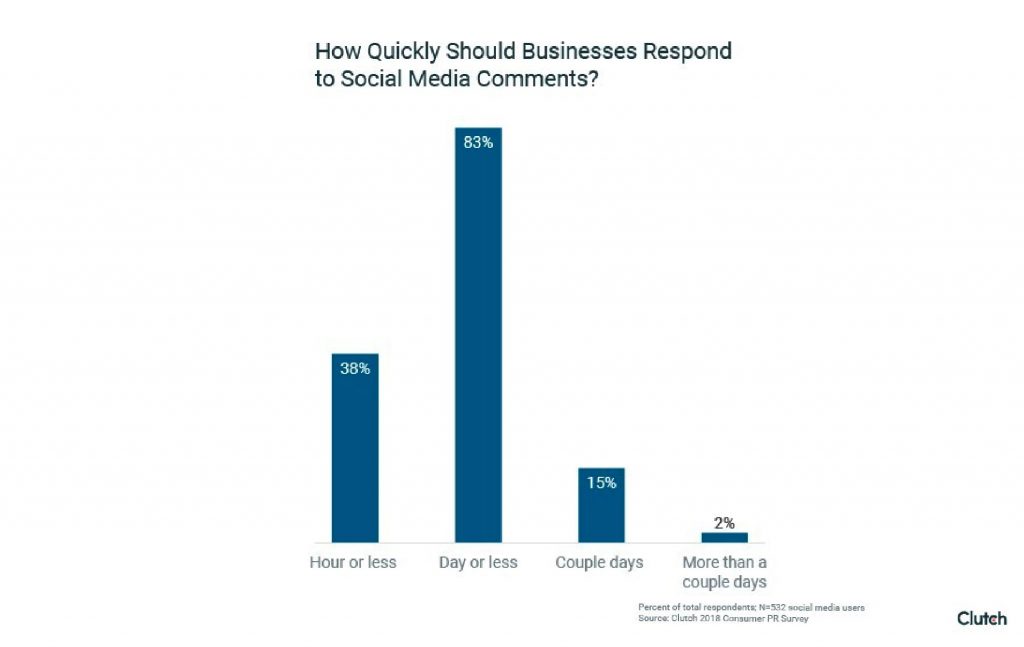
Top 6 Restaurant Marketing Mistakes and How to Avoid Them7 min read
Coming up with a sound marketing strategy for your restaurant, especially a plan that focuses on digital channels, is essential for the growth of your business. Statistics show that the number of people turning to online media, and in particular to social media platforms, for information about local restaurants and food joints is growing all the time.
Take these numbers into consideration:

- 85 percent of U.S. internet users look for local businesses online
- Restaurants rank as the number one business that people will read online reviews for (leading across all age groups)
- 75 percent of people questioned in a survey said that they’d used Facebook to determine which restaurant to eat at
- In addition, 49 percent of people use the Facebook search function to find restaurant information
- At the same time, the restaurant industry is lagging behind other sectors when it comes to moving forward with digital transformation
Restauranteurs are less convinced than other industry owners that a sound digital presence is the key to helping their enterprise grow – 81 percent of entrepreneurs across all industries are convinced of the importance of digital, compared to 65 percent of restaurant industry reps.
This isn’t the only marketing mistake restaurant teams commit.
Lack of focus, poor audience knowledge and inappropriate channel selection can all lead to missed opportunities. Here are some of the biggest restaurant marketing mistakes and the best ways to fix them.
1. Lack of Focus on Social Media
You’ve seen the statistics – social media marketing is tremendously important for reaching the right crowd quickly and cost-efficiently.
Strong social media presence, however, doesn’t mean starting your Facebook page and posting an update every once in a while. You need to be consistent and you need to understand the importance of each channel.

Successful social media marketing depends on:
- Using different social media to accomplish specific goals (Facebook is great for building a community, Twitter can promote your website, Instagram is great for visual marketing and LinkedIn can help you track B2B partners)
- Setting your social media goals and determining which metrics to track – do you want to grow your local audience, increase revenue, maximize online orders or overall brand recognition?
- Using multimedia and video on top of text-based posts to show the attractiveness of the food you serve
- Relying on social media channels (Facebook Places, Foursquare) to get people coming to your restaurant
- Creating social media contests and other types of engaging content to get people involved
2. A Poor Restaurant Website
While social media provide wonderful communication opportunities, you still need a restaurant website to control your online branding and reputation establishment efforts.
There are several mistakes you can make in terms of poor restaurant website management:
- Lacking responsive design that’s suitable for viewing on a small screen
- Relying on outdated design and functionalities
- Failing to update content regularly
- Having no search engine optimization (SEO) strategy
- Having no online ordering functionality
Working with an experienced development team is essential for overcoming these issues. Getting a website to be in line with your brand vision is the key to consistency across all marketing efforts.
As far as content goes, these are the items you need to feature and update regularly:
- Information about your location and contact information
- Your work hours (plus information about lunchtime menus or special offers)
- Your menu
- The procedure for online ordering/booking (a visible button on your homepage would be ideal)
- Links to your social media profiles
- A blog or news section
3. No Interaction with Your Customers
People love online communication because it provides opportunities for direct interactions with their favorite brand. If you’re not responsive on social media, local directories or review websites, you’re missing on a huge opportunity to build the right kind of reputation for your business.
You need to be attentive to comments, queries, booking requests and questions sent directly to you via your website. The lack of a response will lead to serious disappointment, whether the respective person had a positive or negative remark.

Check this statistic out – 78 percent of people who complain to a brand on Twitter expect a response within one hour. Eighty-three percent of those who complain via social media expect a brand response within 24 hours or less.
Build a dedicated team that will interact with customers and prospects online or via phone. Even a disgruntled customer can be turned into a loyal fan if their complaint is addressed in the best possible way.
4. Lacking a Customer Database
Do you know who your clients are? If you’re missing such information or you’re not attempting to collect it in any way, your marketing efforts will lack focus. Both marketing and PR are heavily dependent on good knowledge of your audience.
Digital marketing allows for a lot of targeting. To do it accurately, however, you will have to collect the right kind of information about your customers. Some of the most important restaurant marketing KPIs you should track to generate a customer database include:
- Booking patterns over a specified period of time
- Most popular menu items
- Social media following (demographic profile)
- Website visitors (demographic profile)
- Lifetime value of a customer – calculate it using this formula: Lifetime value of a customer = Revenue x Gross margin x Average number of repeat purchases
- Website traffic-to-leads ratio
- Social media reach and engagement
- Blog post visits (most popular blog posts, number of pages viewed, etc.)
5. Not Spending on Marketing
While organic campaigns are great, you can’t rely on them alone to grow your restaurant businesses sustainably over the years.

Competition in the restaurant industry is intense. There’s a limited number of potential clients and you’re fighting against many other businesses to get their attention.
According to the National Restaurant Association, the typical marketing budget for restaurants is three percent of total revenues. For many, the amount will be insufficient to carry out an omni-channel, targeted campaign.
The budget is crucial but it’s also important to spend money on the right communication methods. This is why having a marketing strategy to begin with, is so important.
6. Underestimating Old-School Marketing Approaches
While digital is certainly the way to go, there are traditional marketing approaches that can still deliver excellent results.
Good, old-school word-of-mouth promotion is one of the biggest restaurant growth drivers. The best way to encourage such customer-generated advertising is to focus on high-quality customer service. Making it easy for people to share their opinions about your business can also stimulate the provision of feedback.
Partnerships with local media and other businesses in the city or neighborhood can also increase the number of people stopping by.
A few other traditional advertising options you may want to explore include:
A few other traditional advertising options you may want to explore include:
- A good, visible sign
- Loyalty programs and in-house promotions
- Community engagement (participation in events, workshops, charity initiatives, etc.)
- Community boards (especially if you have a certain initiative to announce
- Offering a coupon or a free dessert to those who write a social media review – this is a hybrid approach that relies on a traditional perk to generate online buzz
- Using the right print materials, such as booklets or flyers
You can use digital and offline marketing approaches in conjunction with each other to get the best results. In addition, some older internet marketing techniques such as email promotion could also work. To get the best results, you’ll simply need to do audience segmentation and send different kinds of newsletters to different groups.
Don’t underestimate the power of one advertising channel or another. Work hard on learning more about your audience, be responsive and embrace relevant novelties. If you manage to create a diverse strategy that encompasses and relies on different available techniques, you’ll yield the best results.



